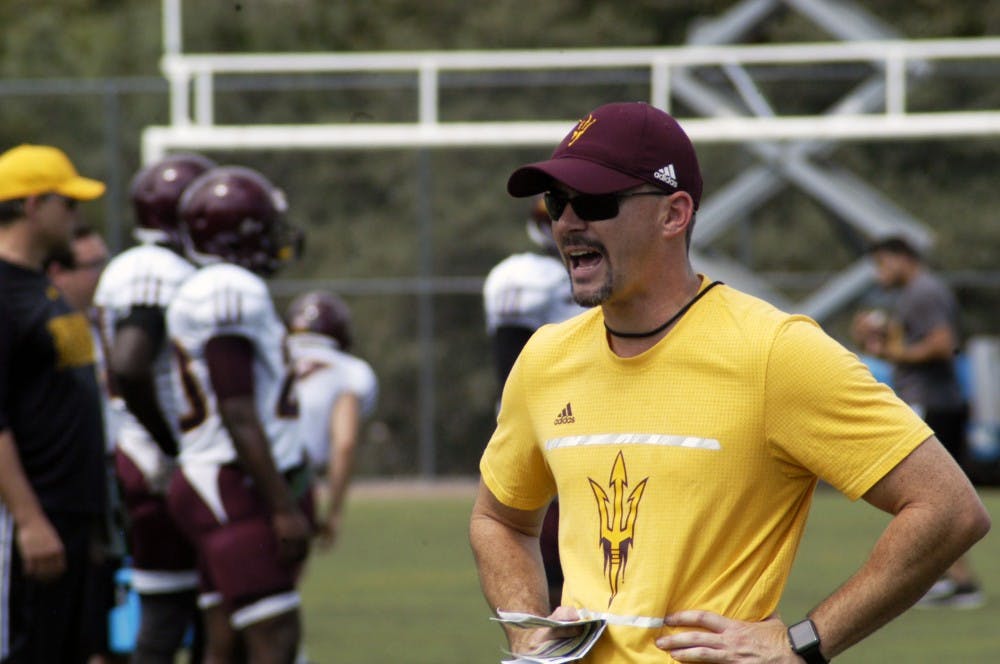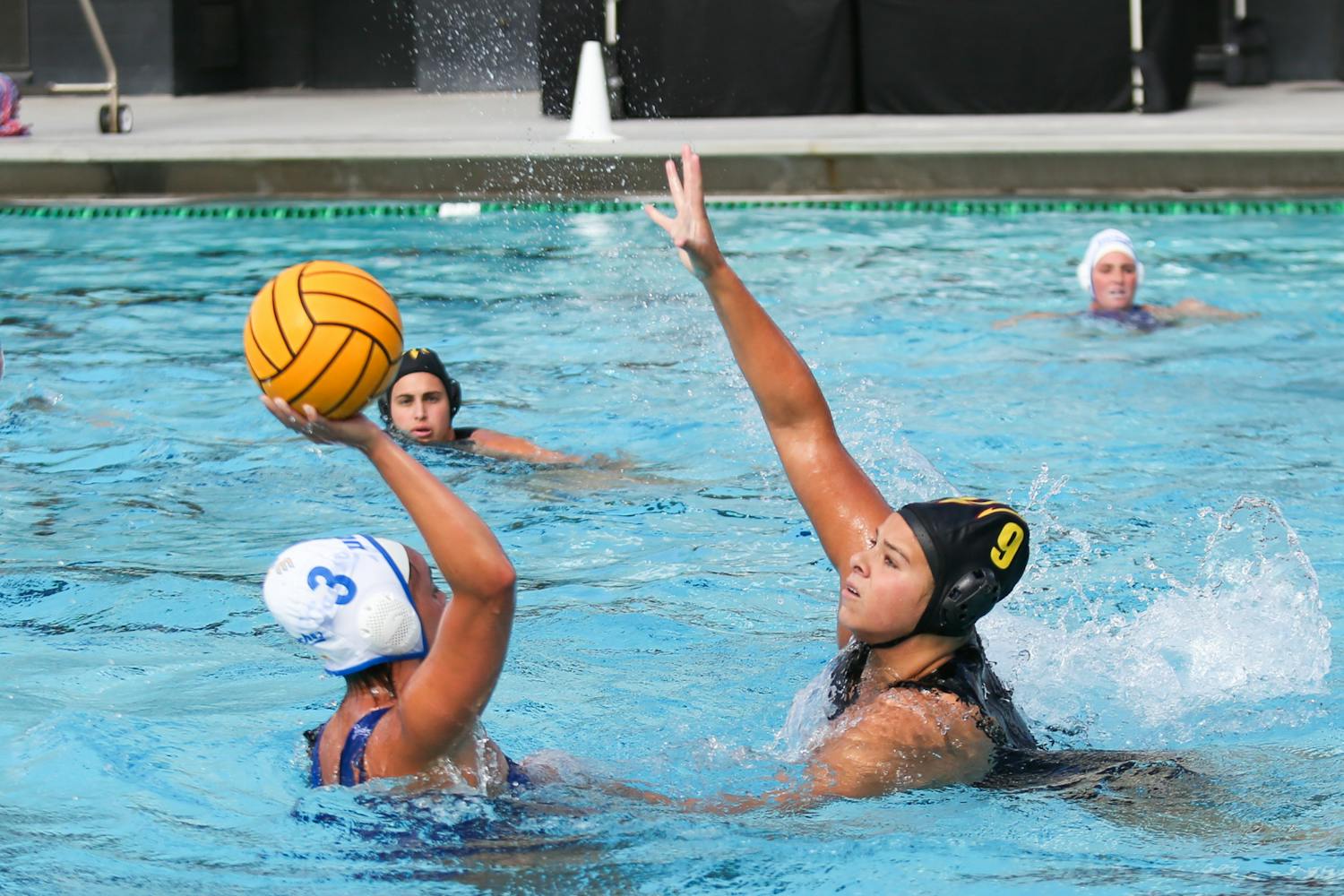The marquee matchup on Saturday night in Houston will be the showdown between ASU coach Todd Graham's aggressive Sun Devil secondary and Texas A&M coach Kevin Sumlin's spread offense.
Both coaches approach the game in the same manner on opposite sides of the ball, aggressive and predicated on winning one-on-one matchups in the passing game.
However intriguing the subplot of Graham vs. Sumlin might be, it’s the battle between two of their top coordinators that could decide the biggest non-conference game either team has played in years.
ASU offensive coordinator Mike Norvell is a mastermind in his own right following Todd Graham from Tulsa to Pittsburgh to Tempe, and Texas A&M defensive coordinator John Chavis, a grizzled veteran is also at his third coordinating position in the SEC.
Nicknamed “The Chief,” for his many years at his alma mater Tennessee and last five years at LSU, Chavis has created dynamic defenses built on speed in order to stop the spread offense.
Already, the clash of the two philosophies is evident.
Norvell runs a spread offense, one that uses mismatches on the outside, pinning bigger linebackers and safeties moving them out of the box and out of their base position.
Chavis takes over a defense that was near bottom in all statistical categories, allowing 450.8 yards/per game and 36.25 points per game in final eight games of the season.
When will the group of highly touted defensive prospects at Texas A&M reach their full potential?
“(Texas A&M) is as talented right now as when I took over that job at Tennessee, or when I went to LSU and took over that job,” Chavis said. “We got some talent in the right places to fit our scheme.”
That talent includes last year's freshman phenom Myles Garrett (who shattered the SEC sack record for a freshman with 11.5 sacks), incoming freshman defensive tackle Daylon Mack (the top-rated recruit from the state of Texas), JUCO transfer safety Justin Evans and a pile of other blue chip recruits from the past couple of years.
At LSU, Chavis' ideal defense was built around defensive ends who were able to rush the passer and corners able to play physical with receivers on the outside. Last year, Texas A&M did well rushing the quarterback but struggled in defending the pass.
Chavis’ scheme is a base 4-3 Over in Cover 3 or Cover 1, centered around pattern matching press corners against the X and Z receivers. The 4-3 also likes to have big bodies up front to stop the run, and athletic ends to get to the quarterback.
But there is a unique twist. Instead of having three linebackers to fill in the gaps left behind, to compensate with most college football teams having three split receivers, another defensive back will replace the strong side linebacker.
This nickel package is not a basic five defensive back scheme – instead the “dime-back” has the same run responsibility as a prototypical Sam linebacker. Where the wrinkle becomes prevalent is in covering the pass. The dime-back is quicker and better at covering a slot receiver than another linebacker would be.
This scheme is effective on two fronts – one, it avoids any real mismatch on the outside, and frees up options for the strong safety to be another blitzing option or take the coverage role of a fourth split receiver.
This 4-3 nickel is the base formation likely to be used against ASU to counter an offense that always plays with at least three receivers on the field.
However, with a smaller body in the box, it exposes a clear weakness that ASU can exploit as it does often by running off-tackle.
A staple of Mike Norvell’s spread attack has been both the read option and zone sweep, capitalizing off the Texas A&M’s run support being limited to six men in the box.
Out of a shotgun spread formation, ASU has been quite effective running the ball when compared to other teams whose playbooks revolve around the spread.
“We really focused on what plays to our strengths, how you want to attack a team you are playing, especially being the first game of the season,” Norvell said. “We want to have a focus for the job we are doing, and taking what the defense gives us.”
ASU has numerous running backs who carry the ball. In the past, D.J. Foster was often used for his speed to get to the boundary and attack the C-gap on off-tackle runs.
The speed on defense, which Chavis is known for, will be under fire by getting larger bodies of the offensive line on the secondary.
Toward the end of last season, ASU was able to implement freshmen running backs Demario Richard, and Kalen Ballage physical backs into the ground game, usually used for inside runs, and less on sweeps intended for Foster.
Richard tallied 138 all-purpose yards and five touchdowns in the final two games of the season, against Arizona and Duke.
Chavis’ defenses have not been fool-proof in the past.
Auburn head coach Gus Malzahn’s spread option gained more than 500 yards in a 41-7 rout in 2014, and Clemson head coach Chris Morris ran exactly 100 plays for 32 first downs on the New Year’s Eve bowl in 2012.
Both Malzahn and Morris were the previous offensive coordinators under Todd Graham, before Mike Norvell took over as offensive coordinator in Tulsa.
Chavis’ scheme is susceptible to mismatches on the outside without the protection of an extra safety or linebacker, enabling bubble screens and quick passes. Norvell will send players in motion who are able to get past the first and second levels of the defense and force the defensive backs to make open-field tackles.
In Chavis’ pattern-matching Cover 3, it is not a true zone coverage. The cornerbacks do have deep third responsibility, but tend to release into their third with the X and Z receivers. Most of the time in modern offenses, both the X and Z will usually run a vertical route to spread the defensive backs apart.
The nickel will creep up to the line of scrimmage to cover the slot receiver, but something that ASU does – which most spread teams will do – is have a fourth receiver or tight end lined up, creating a natural mismatch.
Under Norvell and his version of the spread, the key to the ASU passing attack has been getting one-on-one on the outside by using ‘trips’ — three receivers to either side of the formation.
Chavis has opted not to account for the third receiver in a trips formation, but rather allow him to run his route in zone coverage. This plays right into the hands of Norvell, known for exploiting mismatches on the perimeter.
Texas A&M last year was one of the worst teams in one of the Power 5 conferences in defending the pounding running attacks in the SEC West alone.
Norvell and ASU on the offensive side will bring their relentless pace and package combinations to confuse Chavis’ young defense.
The matchup between the Aggie defense and Sun Devil offense hinges on whether or not the 4-3 nickel formation will have enough muscle up front to stop the possible spread run ASU has utilized to sink another defender into the box, creating more coverage problems in the passing game.
It’s something to keep a close eye on throughout Saturday’s game – a chess match between conflicting offensive and defensive ideologies of the past handful of years of college football.
Related Links:
Report: ASU football cornerback Ronald Lewis to transfer
5 predictions for ASU football's 2015 season
Reach the reporter at brian.w.carroll@asu.edu or follow @biggs_carroll on Twitter.
Like State Press Sports on Facebook and follow @statepresssport on Twitter.




